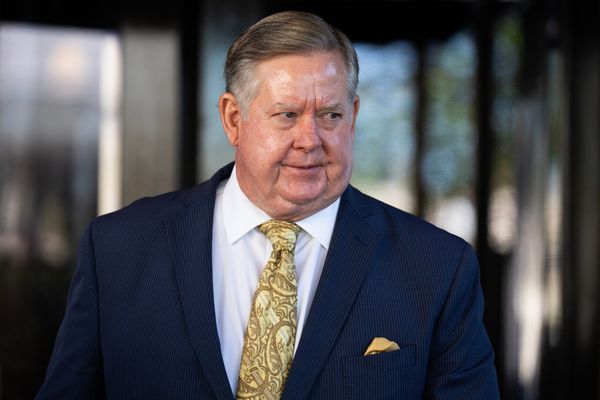
The Bank of England has left interest rates on hold at 4.25%, though it signalled further cuts in the cost of borrowing later this year after “clearer evidence” of rising unemployment amid a slowing economy.
Six members of the Bank’s nine-member monetary policy committee (MPC) voted to keep rates on hold while three supported a reduction to 4%, to add to the four quarter-point cuts since last August.
The Bank’s governor, Andrew Bailey, said interest rates “remain on a gradual downward path” after “seeing signs of softening in the labour market”. He cautioned, however, that the world was “highly unpredictable” and it was difficult to predict when interest rates would next be reduced.
Financial markets expect the MPC to reduce rates at its next meeting in August, and again to 3.75% before the end of the year.
The economy shrank by 0.3% in April after a 0.7% boost in the first three months of the year, indicating a significant cooling in the outlook for growth in national output, or gross domestic product (GDP). Vacancy rates have plummeted to pre-pandemic levels, unemployment has increased and wages growth has slowed.
The MPC said in its report that business surveys “had continued to point to weak underlying GDP growth” and the Bank’s regional agents had said businesses were reluctant to invest while the outlook was clouded by uncertainty.
A forecast for the rest of the year said growth would be just 0.25% in each quarter, though “slightly higher” than expected in May.
The MPC expects inflation to rise temporarily in the coming months as a result of higher energy prices, and then to fall back later in the year as wage growth weakens.
Kathleen Brooks, the research director at the foreign exchange dealer XTB, said the Bank was mainly concerned with bringing inflation down to its 2% target, but it “sounds more worried about the growth outlook than the inflation outlook”.
Paul Dales, the chief UK economist at Capital Economics, said: “We think it’s only a matter of time before the weakness in employment will lead to a big easing in wage growth. As a result, we continue to expect quarter-point cuts in August, November and February.”
UK inflation edged down to 3.4% in May from 3.5% in April, according to official figures published on Wednesday, reflecting falls in air fares and petrol prices. But the cost of food showed a marked increase, including a record rise in chocolate prices as a result of poor harvests in key producer countries.
Bailey said earlier this month that Donald Trump’s tariff war made prospects for inflation and interest rates more ambiguous. He told MPs: “The path remains downwards, but how far and how quickly is now shrouded in a lot more uncertainty, frankly.”
Since the MPC’s last meeting, the escalating crisis in the Middle East has raised concerns about the future path of oil prices. The MPC report said the cost of Brent crude had risen by 26% to $79 a barrel since the previous report in May, “in part reflecting an escalation in the conflict between Israel and Iran”. European natural gas prices increased by 11%.
James Smith, an economist at ING, said Bank officials would be concerned about the knock-on effects of higher oil prices on inflation.
“Though the rise so far won’t make much difference to the inflation outlook – and officials commented that it had little bearing on this latest decision – we know some at the Bank are wary of a repeat of 2022, where a rise in energy prices turned into a much wider and more persistent services-driven inflation episode,” he said.
The MPC, however, said the impact of US tariffs appeared to have been less significant than originally feared.
The chancellor, Rachel Reeves, has sought to take some of the credit for the Bank’s rate cuts since Labour came to power last summer, suggesting her prudent fiscal policy has allowed it to act.
Labour will be hoping for further rate cuts later in the year to lower the cost of borrowing for companies and help kickstart economic growth.







